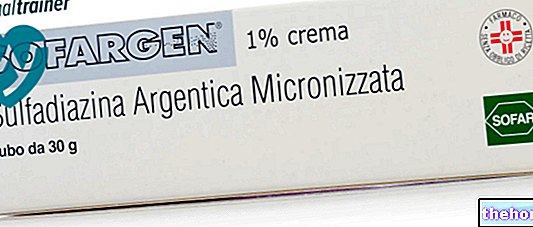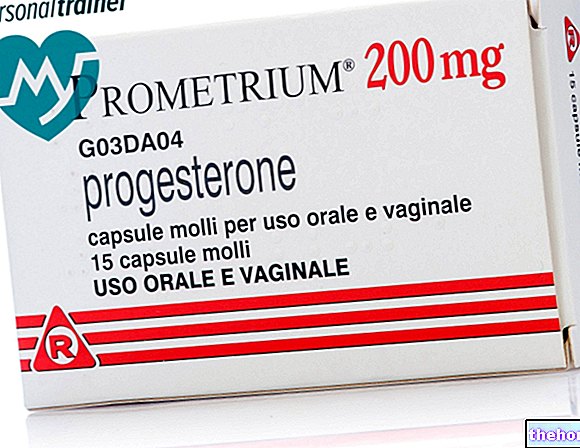Active ingredients: Clindamycin
CLEOCIN 2% Vaginal Cream
Cleocin package inserts are available for pack sizes:- CLEOCIN 2% Vaginal Cream
- CLEOCIN 100 mg vaginal suppositories
Why is Cleocin used? What is it for?
PHARMACOTHERAPEUTIC CATEGORY
Antibiotics - gynecological antimicrobials and antiseptics.
THERAPEUTIC INDICATIONS
Bacterial vaginosis / nonspecific vaginitis (vaginitis caused by: Gardnerella vaginalis, Mobiluncus s.p.p., Bacteroides s.p.p., Mycoplasma hominis, Peptostreptococcus s.p.p.)
Contraindications When Cleocin should not be used
Clindamycin is contraindicated in patients with a history of hypersensitivity to clindamycin, lincomycin or any of the other ingredients of this medicinal product.
Furthermore, clindamycin is contraindicated in subjects with a previous history of colitis linked to the use of antibiotics.
Do not administer in pediatric age as safety of use and efficacy have not been ascertained.
Precautions for use What you need to know before taking Cleocin
Before or after the initiation of therapy with clindamycin, it may be necessary to investigate the presence of other infections, including those caused by Trichomonas vaginalis, Candida albicans, Chlamydia trachomatis and gonococci, with appropriate laboratory tests.
The use of clindamycin can cause the proliferation of resistant organisms, especially yeasts.
Should superinfection occur, take appropriate therapeutic measures. CLEOCIN should be prescribed with caution to patients with a history of gastrointestinal disease, particularly colitis, and to atopic individuals.
Symptoms indicative of pseudomembranous colitis may appear during or after antimicrobial treatment (see UNDESIRABLE EFFECTS). Pseudomembranous colitis has been reported with nearly all antibacterials, including clindamycin, ranging in severity from mild to life-threatening. It is therefore important that this diagnosis be considered in patients who present with diarrhea following the administration of antibacterials. Cases of moderate severity may improve upon discontinuation of the drug.
In the presence of pseudomembranous diarrhea, treatment with clindamycin should be discontinued and adequate antibacterial therapy prescribed. In this situation, drugs that inhibit peristalsis are contraindicated.
Caution is advised when prescribing clindamycin in patients with inflammatory bowel disease such as Crohn's disease or ulcerative colitis.
Particular attention should also be paid to allergic history related to the use of drugs or other allergens.
Interactions Which drugs or foods can modify the effect of Cleocin
Tell your doctor or pharmacist if you have recently taken any other medicines, even those without a prescription.
Cross-resistance between clindamycin and lincomycin has been demonstrated. Clindamycin has neuromuscular blocking properties and may enhance the activity of other neuromuscular blocking drugs (eg, ether, tubocurarine, pancuronium); particular caution should therefore be observed in the use of clindamycin in combination with these drugs.
Warfarin or similar medicines used to thin the blood. You may be more at risk of bleeding. Your doctor may need to have regular blood tests to check the ability of your blood to clot.
Warnings It is important to know that:
The use, especially if prolonged, of topical products can give rise to sensitization phenomena. If this occurs, treatment must be suspended and suitable therapeutic measures adopted.
As with all vaginal infections, sexual intercourse is not recommended during treatment with clindamycin vaginal cream. The effectiveness of contraceptive devices such as male condoms and latex vaginal diaphragms may decrease if exposed to the base (such as liquid paraffin) used in the vaginal cream clindamycin. The use of these devices is not recommended in the 72 hours following treatment with the cream. vaginal with clindamycin, for the possible reduction of contraceptive efficacy or protection against sexually transmitted diseases.
The use of other vaginal products, such as tampons and vaginal douches, is not recommended during treatment with clindamycin vaginal cream.
Avoid contact with eyes.
There are limited data on the use of CLEOCIN in pregnant women therefore it is not recommended during the first trimester and use should only be made if strictly necessary in the second and third trimesters (see Fertility, pregnancy and lactation).
It is not known whether CLEOCIN is excreted in human milk, therefore a benefit / risk assessment must be made before its use during lactation (see Fertility, pregnancy and lactation).
Pediatric population
Safety and efficacy in pediatric patients have not been established.
Fertility, pregnancy and breastfeeding
Pregnancy
Ask your doctor or pharmacist for advice before taking any medicine.
As there are no adequate and well controlled studies in women in the first trimester of pregnancy, the use of clindamycin is not recommended during this period.
In clinical trials, the intravaginal use of clindamycin vaginal products in women in the second trimester of pregnancy and the systemic use of clindamycin phosphate in the second and third trimester were not associated with congenital abnormalities.
Clindamycin can be used in the treatment of pregnant women during the second and third trimesters if strictly necessary.
Reproduction studies conducted in rats and mice by oral and parenteral administration of clindamycin at doses ranging from 100 to 600 mg / kg / day have shown no signs of fetal harm caused by clindamycin.
Cleft palate was observed in treated fetuses in one mouse strain; however, this effect was not present in all the other mouse strains or in the other animal species studied: it is therefore to be considered a strain-specific effect. Reproduction studies in animals are not always predictive of response in humans.
Feeding time
It is not known whether vaginally applied clindamycin is excreted in human milk. However, the presence of clindamycin in breast milk has been reported after oral or parenteral administration. Therefore, a comprehensive benefit / risk assessment should be made when considering the use of clindamycin vaginal cream in a nursing woman.
Fertility
Fertility studies in rats treated with oral clindamycin showed no effects on fertility or reproductive capacity. Animal fertility studies have not been performed using vaginal administration.
Effects on ability to drive and use machines
Clindamycin has no or negligible influence on the ability to drive and use machines.
Dosage and method of use How to use Cleocin: Dosage
One application per day of 5 g of cream (equal to 100 mg of clindamycin) at bedtime, for 3-7 consecutive days.
Completely fill the applicator with cream and introduce deeply into the vagina, completely extruding all the contents.
Overdose What to do if you have taken too much Cleocin
There have been no reported cases of overdose with clindamycin. The clindamycin phosphate contained in the vaginal cream applied in the vagina can be absorbed in quantities sufficient to produce systemic effects.
Accidental ingestion of the product may produce effects comparable to therapeutic concentrations of oral clindamycin.
In case of accidental ingestion / intake of an excessive dose of CLEOCIN, notify your doctor immediately or go to the nearest hospital. In case of overdose, treat symptomatically and institute adequate supportive care as needed.
IF YOU HAVE ANY DOUBTS ABOUT THE USE OF CLEOCIN, PLEASE ASK YOUR DOCTOR OR PHARMACIST.
Side Effects What are the side effects of Cleocin
CLEOCIN is generally well tolerated. The most frequently reported side effects were cervico-vaginitis and vulvo-vaginitis caused by Candida albicans and Trichomonas vaginalis, vulvar irritation.
The following table presents adverse reactions identified through clinical studies and post-marketing surveillance, sorted by system organ class and frequency. Adverse reactions identified from post marketing experience are shown in italics. Frequency groups are defined according to the following convention: Very common (≥1 / 10); Common (≥1 / 100,
The safety of use of clindamycin-based vaginal cream has been evaluated both in non-pregnant patients and in patients during the second and third trimester of gestation.
The following treatment-related undesirable effects have been reported by less than 10% of patients.
After vaginal application the systemic absorption of clindamycin is minimal (maximum 7-8% after repeated application). However, currently it is not possible to exclude the possibility of occurrence of reactions commonly observed with oral or parenteral administration of clindamycin, such as:
Blood and lymphatic system disorders: There have been cases of transient neutropenia (leukopenia) and eosinophilia, agranulocytosis and thrombocytopenia, in which a clear etiological correlation with clindamycin has not been demonstrated.
Immune system disorders: anaphylactoid reactions and drug reaction with eosinophilia and systemic symptoms (DRESS).
Nervous system disorders: dysgeusia.
Gastrointestinal disorders: pseudomembranous colitis, abdominal pain, oesophagitis, oesophageal ulcer, nausea, vomiting and diarrhea.
Hepato-biliary disorders: changes in liver function parameters and jaundice have been observed during treatment with clindamycin.
Skin and subcutaneous tissue disorders: Maculopapular rashes and urticaria have been observed during treatment. Cases of generalized morbilliform rashes have been reported with unknown frequency, mild or moderate degree. Cases of erythema multiforme with known frequency have been related to clindamycin. Should any of these reactions occur, clindamycin therapy should be discontinued. If the reactions are severe, treat them as usual (adrenaline, corticosteroids, antihistamines). Cases of pruritus, exfoliative dermatitis and bullous dermatitis have been reported. Rare cases of toxic epidermal necrolysis, Stevens-Johnson syndrome and acute generalized exanthematous pustulosis (AGEP) have been reported in the post-marketing setting.
Cases of diarrhea, haemorrhagic diarrhea, colitis (including severe pseudomembranous colitis) have been reported following administration of clindamycin, both topically and systemically.
The physician must therefore evaluate the possible development of antibiotic-dependent diarrhea and colitis. The latter may arise during administration or even 2 or 3 weeks after the end of therapy. Studies have shown that one of the primary causes of antibiotic-dependent colitis is represented by a toxin produced by clostridia.
These types of colitis are usually characterized by severe and persistent diarrhea and intense abdominal cramps, possibly with blood and mucus in the stool.
In the case of severe diarrhea, a rectosigmoidoscopic examination is recommended. The presence of colitis can be further confirmed by stool culture for C. difficile in a selective medium and by the C. difficile toxin assay.
Therefore in case of diarrhea, the application of the drug must be stopped immediately and appropriate therapy must be instituted by the doctor.
Antiperistaltic drugs, opiates and diphenoxylate with atropine, can prolong and / or worsen the disease.
Vancomycin has been shown to be effective in the treatment of antibiotic-induced pseudomembranous colitis caused by Clostridium difficile. Usually, in adults, the daily dose varies from 500 mg to 2 g of vancomycin, orally divided into 3-4 administrations for 7-10 days. Some rare cases of relapse after treatment with vancomycin have been described.
Cases of modest colitis may regress upon simple discontinuation of therapy.
In moderate to severe cases, it is recommended to administer fluids, electrolytes and proteins, as needed.
Cholestyramine binds to the toxin in vitro, but this resin also binds to vancomycin. Therefore in the case of simultaneous administration of cholestyramine and vancomycin it is advisable to administer each drug at different times.
In cases of colitis, however, all other possible causes must be considered.
Compliance with the instructions contained in the package leaflet reduces the risk of undesirable effects.
Reporting of side effects
If you get any side effects, talk to your doctor or pharmacist. This includes any possible side effects not listed in this leaflet. Undesirable effects can also be reported directly through the national reporting system at the address https://www.aifa.gov.it/content/segnalazioni-reazioni-avverse
By reporting side effects you can help provide more information on the safety of this medicine.
Expiry and Retention
Expiry: see the expiry date indicated on the package.
WARNING: Do not use the medicine after the expiry date indicated on the package.
The expiry date refers to the product in intact packaging, correctly stored.
Store at a temperature not exceeding 25 ° C. Do not refrigerate or freeze.
Medicines should not be disposed of via wastewater or household waste. Ask your pharmacist how to throw away medicines you no longer use. This will help protect the environment.
Keep this medicine out of the sight and reach of children.
COMPOSITION
100 g of cream contain: Active ingredient: clindamycin phosphate 2.376 g, equal to clindamycin base 2 g. Excipients: liquid paraffin, propylene glycol, polysorbate 60, cetostearyl alcohol, cetyl palmitate, stearic acid, sorbitan monostearate, benzyl alcohol, purified water.
PHARMACEUTICAL FORM AND CONTENT
Cream
1 tube of 21 g of cream + 3 disposable applicators.
1 tube of 40 g of cream + 7 disposable applicators.
Each applicator, completely filled, is dosed for the administration of about 5 g of cream, equal to 100 mg of clindamycin.
VAGINAL USE
Not all pack sizes may be marketed.
INSTRUCTIONS FOR USING THE APPLICATOR
FILLING THE APPLICATOR
Remove the cap from the cream tube.
Screw the applicator onto the tube, from the open side. With a slight pressure on the tube, push the cream into the applicator until it is completely filled.
Unscrew the applicator from the tube.
INSERTION OF THE CREAM IN THE VAGINA
For a correct insertion of the drug into the vagina, place yourself in the supine position. Hold the applicator with your thumb and middle finger. Insert the applicator containing the cream into the vagina, deeply without causing discomfort.
Press the plunger so that the cream is introduced into the vagina. Remove the applicator from the vagina and discard it.
Source Package Leaflet: AIFA (Italian Medicines Agency). Content published in January 2016. The information present may not be up-to-date.
To have access to the most up-to-date version, it is advisable to access the AIFA (Italian Medicines Agency) website. Disclaimer and useful information.
01.0 NAME OF THE MEDICINAL PRODUCT
CLEOCIN 2% VAGINAL CREAM
02.0 QUALITATIVE AND QUANTITATIVE COMPOSITION
100 g of cream contain: clindamycin phosphate 2.376 g, equal to clindamycin base 2 g
For the full list of excipients, see section 6.1.
03.0 PHARMACEUTICAL FORM
Vaginal cream.
04.0 CLINICAL INFORMATION
04.1 Therapeutic indications
Bacterial vaginosis / nonspecific vaginitis (vaginitis caused by: Gardnerella vaginalis, Mobiluncus s.p.p., Bacteroides s.p.p., Mycoplasma hominis,Peptostreptococcus s.p.p.).
04.2 Posology and method of administration
One application per day of 5 g of cream (equal to 100 mg of clindamycin) at bedtime, for 3-7 consecutive days.
Completely fill the applicator with cream and introduce deeply into the vagina, completely extruding all the contents.
04.3 Contraindications
CLEOCIN is contraindicated in patients with hypersensitivity to the active substance, to lincomycin or to any of the excipients, with a history of colitis episodes related to the use of antibiotics.
Do not administer in pediatric age as safety of use and efficacy have not been ascertained.
04.4 Special warnings and appropriate precautions for use
The use of clindamycin can cause the development of resistant germs, especially fungi. Should superinfection occur, take appropriate therapeutic measures. CLEOCIN should be prescribed with caution to patients with a history of gastrointestinal diseases, particularly colitis and to atopic individuals. Oral and parenteral administration of clindamycin, as similarly occurs with all antibiotics, has been associated with diarrhea and in some cases with antibiotic-related colitis. If consistent or prolonged diarrhea occurs during treatment with vaginal cream, the medicinal product should be discontinued and appropriate diagnostic procedures and therapy used. Particular attention should also be paid to allergic precedents linked to the use of drugs or other allergens. The use, especially if prolonged, of topical products, can give rise to sensitization phenomena. If this occurs, treatment must be suspended and suitable therapeutic measures adopted. CLEOCIN 2% Vaginal Cream contains liquid paraffin which may reduce the effectiveness of latex or rubber-based contraceptive devices such as male condoms and vaginal diaphragms. Therefore, the use of these devices is not recommended in the 72 hours following treatment with CLEOCIN 2. % Vaginal Cream. Patients should not have vaginal intercourse or use vaginal products (such as tampons or douches) during treatment with CLEOCIN cream.
Avoid contact with eyes.
Pediatric use
Safety and efficacy in pediatric patients have not been established.
04.5 Interactions with other medicinal products and other forms of interaction
Cross-resistance between clindamycin and lincomycin has been demonstrated.
An antagonism between clindamycin and erythromycin has been demonstrated in vitro. Consequently, concomitant administration is not recommended.
Clindamycin has neuromuscular blocking properties and can enhance the neuromuscular blocking effect of drugs specific for this action (eg ether, tubocurarine, pancuronium). Particular caution should therefore be observed when using clindamycin in combination with these drugs.
04.6 Pregnancy and lactation
Reproduction studies conducted in rats and mice by oral and parenteral administration of clindamycin at doses ranging from 20 to 600 mg / kg / day did not reveal any signs of impaired fertility or risk to the fetus.
Cleft palate was observed in treated fetuses in one mouse strain; however, this effect was not present in all the other mouse strains or in the other animal species studied: it is therefore to be considered a species-specific effect.
Clinical studies conducted in women during the II and III trimester of gestation with clindamycin administered both systemically and topically (vaginally) have shown good tolerability of the drug during pregnancy.In these studies, the use of clindamycin was not associated with an increase in the frequency of congenital abnormalities.
If clindamycin vaginal cream is used during the second and third trimester of gestation the possibility of embryo damage is remote. However, there are no adequate and controlled studies in women during the first trimester of pregnancy. be used in the first trimester of gestation only if strictly necessary.
It is not known whether vaginally applied clindamycin is excreted in human milk; on the other hand, this presence is demonstrated after oral or parenteral administration. Therefore, it is advisable to carefully evaluate the benefit / risk ratio when it is necessary to administer CLEOCIN during lactation.
04.7 Effects on ability to drive and use machines
No studies on the ability to drive and use machines have been performed.
04.8 Undesirable effects
CLEOCIN is generally well tolerated. The most frequently reported side effects were cervico-vaginitis and vulvo-vaginitis incurred byCandida Albicans And Trichomonas vaginalis, vulvar irritation.
The safety of use of clindamycin-based vaginal cream has been evaluated both in non-pregnant patients and in patients during the second and third trimester of gestation.
The following undesirable effects were seen in less than 10% of patients; in particular, the frequencies are reported as follows: Common: ≥ 1/100 and
After vaginal application the systemic absorption of clindamycin is minimal (maximum 7-8% after repeated application). However, currently it is not possible to exclude the possibility of occurrence of reactions commonly observed with oral or parenteral administration of clindamycin, such as:
Disorders of the blood and lymphatic system: there have been cases of transient neutropenia (leukopenia) and eosinophilia, agranulocytosis and thrombocytopenia, in which a clear etiological correlation with clindamycin has not been demonstrated.
Disorders of the immune system: anaphylactoid reactions.
Nervous system disorders: dysgeusia.
Gastrointestinal disorders: abdominal pain, oesophagitis, oesophageal ulcer, nausea, vomiting and diarrhea.
Hepato-biliary disordersChanges in liver function parameters and jaundice have been observed during treatment with clindamycin.
Skin and subcutaneous tissue disordersMaculopapular rashes and urticaria were observed during treatment. The most frequently reported side effects are mild to moderate generalized morbilliform rashes. Rare cases of erythema multiforme have been related to clindamycin. Should any of these reactions occur, clindamycin therapy should be discontinued. If the reactions are severe, treat them as usual (adrenaline, corticosteroids, antihistamines). Cases of pruritus, vaginitis and rare cases of exfoliative and vesiculo-bullous dermatitis have been reported. Rare cases of toxic epidermal necrolysis and Stevens-Johnson syndrome have been reported in the post-marketing setting.
Cases of diarrhea, haemorrhagic diarrhea, colitis (including severe pseudomembranous colitis) have been reported following administration of clindamycin, both topically and systemically.
The physician must therefore evaluate the possible development of antibiotic-dependent diarrhea and colitis. The latter may arise during administration or even 2 or 3 weeks after the end of therapy. Studies have shown that one of the primary causes of antibiotic-dependent colitis is represented by a toxin produced by clostridia.
These types of colitis are usually characterized by severe and persistent diarrhea and intense abdominal cramps, possibly with blood and mucus in the stool.
In the case of severe diarrhea, a rectosigmoidoscopic examination is recommended. The presence of colitis can be further confirmed by "fecal culture examination for C. difficult in a selective medium and by the C. difficult.
Antiperistaltic drugs, opiates and diphenoxylate with atropine, can prolong or worsen the disease.
Therefore in case of diarrhea, the application of the drug must be stopped immediately and appropriate therapy must be instituted by the doctor.
Vancomycin has been shown to be effective in treating antibiotic-induced pseudomembranous colitis caused by Clostridium difficile.
Usually, in adults, the daily dose varies from 500 mg to 2 g of vancomycin, orally, divided into 3-4 administrations for 7-10 days. Some rare cases of relapse after treatment with vancomycin have been described.
Cases of modest colitis may regress upon simple discontinuation of therapy.
In moderate to severe cases, it is recommended to administer fluids, electrolytes and proteins, as needed.
Cholestyramine binds to the toxin in vitro: however this resin also binds to vancomycin. Therefore in the case of simultaneous administration of cholestyramine and vancomycin it is advisable to administer each drug at different times.
In cases of colitis, however, all other possible causes must be considered.
04.9 Overdose
Accidental ingestion of the product could produce effects related to therapeutic levels of oral clindamycin.
The clindamycin contained in the vaginal cream can be absorbed in sufficient quantity to produce systemic effects.
In case of overdose, treat symptomatically and institute adequate supportive care as needed.
05.0 PHARMACOLOGICAL PROPERTIES
05.1 Pharmacodynamic properties
Pharmacotherapeutic group: Antibiotics-antimicrobials and gynecological antiseptics.
ATC code: G01AA10
Clindamycin phosphate is a water-soluble ester of the semisynthetic antibiotic obtained by the 7 (S) -chlorine substitution of the 7 (R) -hydroxy group of lincomycin.
Clindamycin is an antimicrobial agent that has been shown to be effective in treating infections caused by susceptible anaerobic bacteria or by susceptible strains of Gram positive aerobic bacteria. It showed activity in vitro against the following organisms associated with bacterial vaginosis:
- Gardnerella vaginalis
- Mobiluncus s.p.p.
- Bacteroides s.p.p.
- Mycoplasma hominis
- Peptostreptococcus s.p.p.
05.2 "Pharmacokinetic properties
After once-daily vaginal administration of 5 g of cream, equivalent to 100 mg of clindamycin base, the mean peak serum levels of clindamycin in the volunteer was 20 ng / ml (range 3 to 93 ng / ml).
Approximately 3% (range 0.1 to 7%) of the administered dose is absorbed systemically.
In women with bacterial vaginosis, the amount of clindamycin absorbed after vaginal administration of 100 mg of CLEOCIN (20 mg / g) is 4% (range 0.8 to 8%), approximately the same as in the volunteer. healthy.
05.3 Preclinical safety data
The acute toxicity data relating to the experimental animal are as follows:
Clindamycin phosphate, administered parenterally to rats at a dose of 120 mg / kg / day for 30 days was well tolerated.
Administered i.v. in dogs (up to 120 mg / kg / day for a period of 6-27 days) did not induce significant changes.
The administration i.m. in dogs (up to 90 mg / kg / day for 6-30 days) induced pain at the injection site and an increase in transaminases.
Local and general tolerability, evaluated in rabbits, was found to be good.
Clindamycin phosphate in mouse, rat and pig studies did not show any teratogenic effect.
The administration of 100-180 mg / kg of clindamycin phosphate to pregnant rats and mice did not induce changes in production parameters or teratogenic effects.
06.0 PHARMACEUTICAL INFORMATION
06.1 Excipients
Liquid paraffin, propylene glycol, polysorbate 60, cetostearyl alcohol, cetyl palmitate, stearic acid, sorbitan monostearate, benzyl alcohol, purified water.
06.2 Incompatibility
Simultaneous use with other products intravaginally is not recommended.
06.3 Period of validity
2 years.
06.4 Special precautions for storage
Do not store above 25 ° C. Do not refrigerate or freeze.
06.5 Nature of the immediate packaging and contents of the package
Aluminum and polythene laminate tube. Polypropylene cap. Disposable polythene applicators.
21 g tube of vaginal cream, with 3 disposable applicators
40g tube of vaginal cream, with 7 disposable applicators
06.6 Instructions for use and handling
Unused medicine and waste derived from this medicine must be disposed of in accordance with local regulations
07.0 MARKETING AUTHORIZATION HOLDER
Pfizer Italia S.r.l.
Via Isonzo, 71 - 04100 Latina
08.0 MARKETING AUTHORIZATION NUMBER
21 g tube of vaginal cream, with 3 disposable applicators, - AIC n .: 028535021.
40 g tube of vaginal cream, with 7 disposable applicators, - AIC n .: 028535019.
Not all pack sizes may currently be on the market.
09.0 DATE OF FIRST AUTHORIZATION OR RENEWAL OF THE AUTHORIZATION
April 2008
10.0 DATE OF REVISION OF THE TEXT
December 30, 2011




























